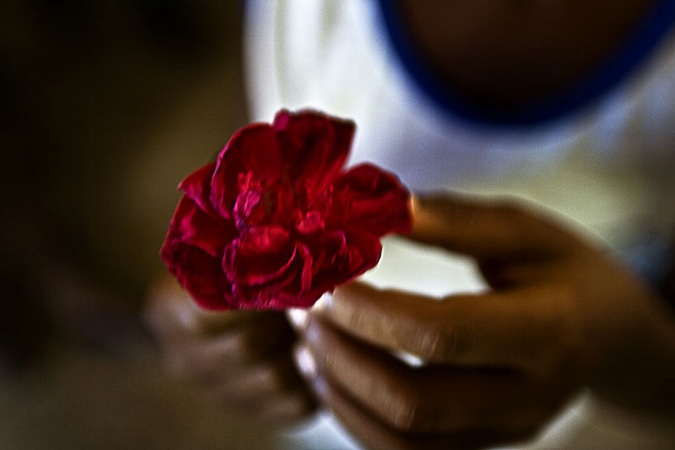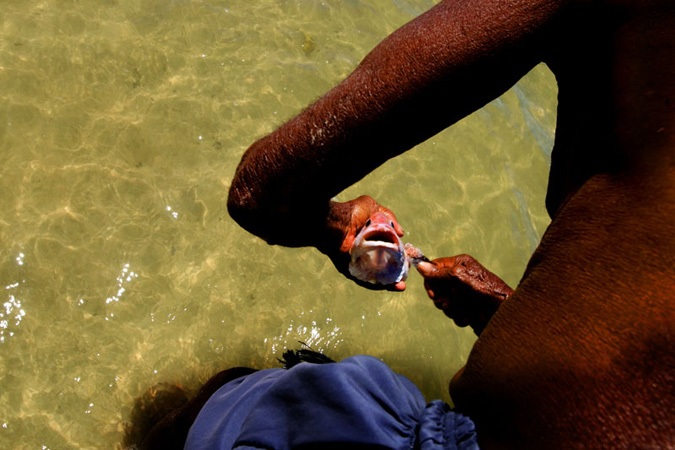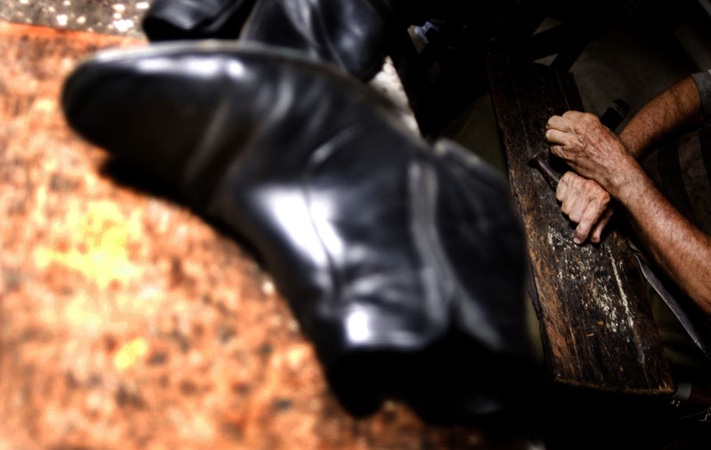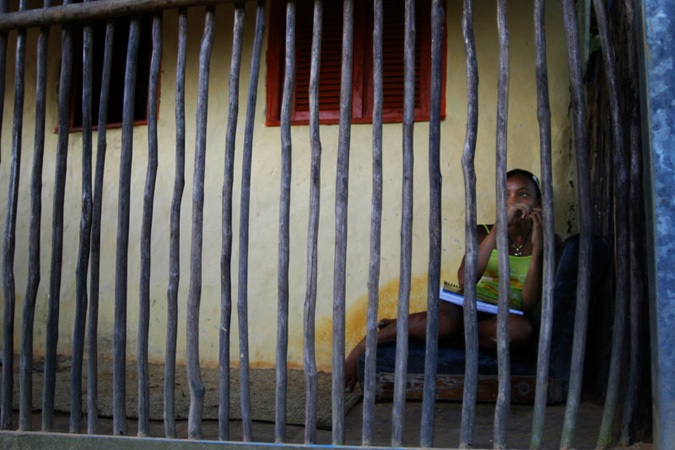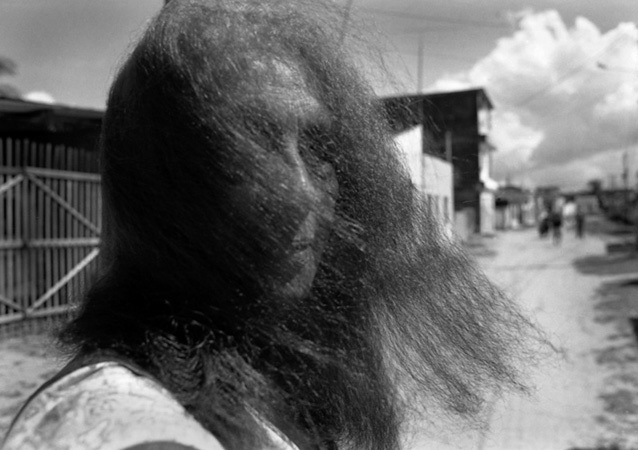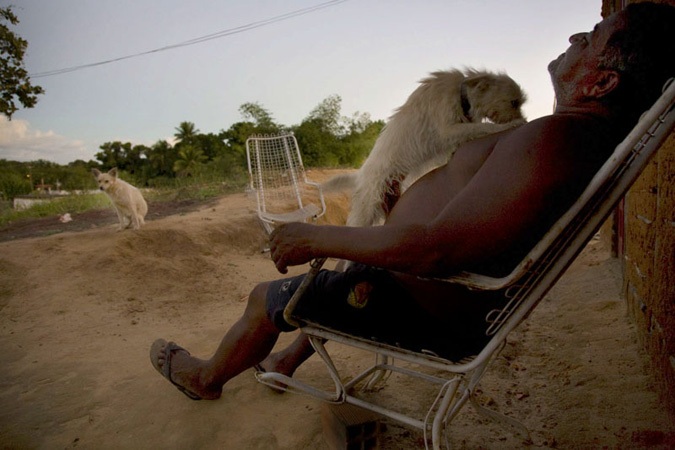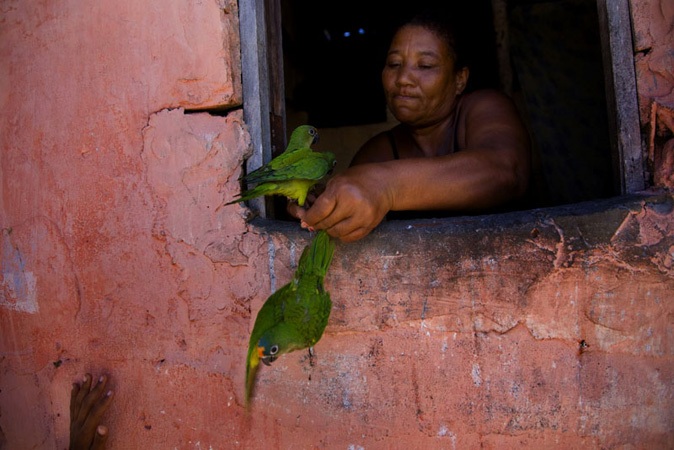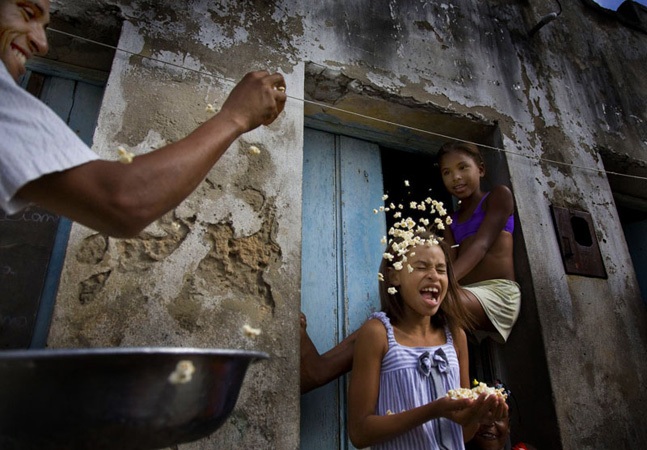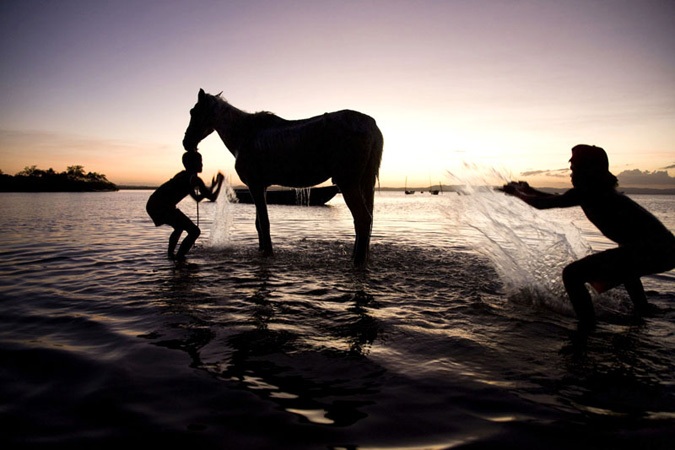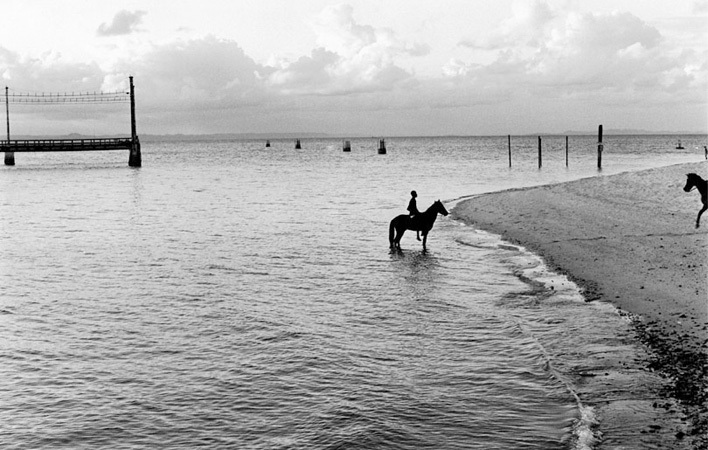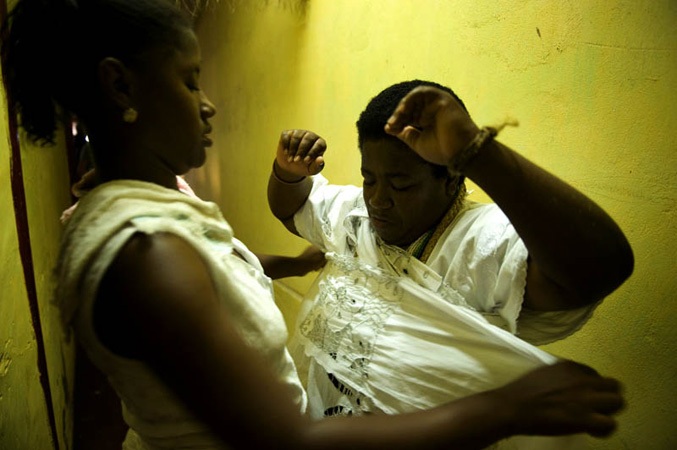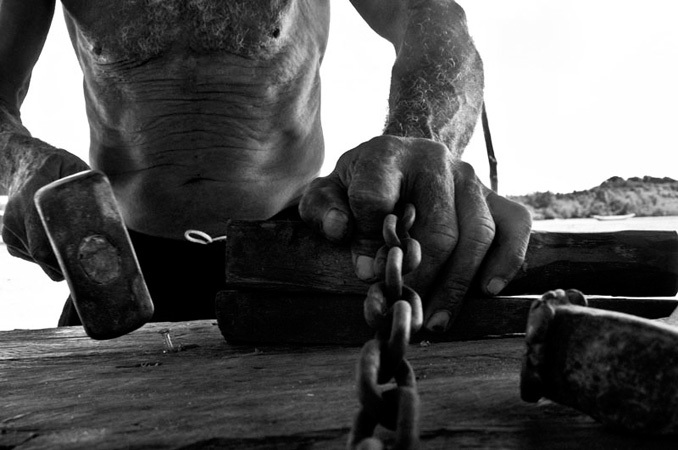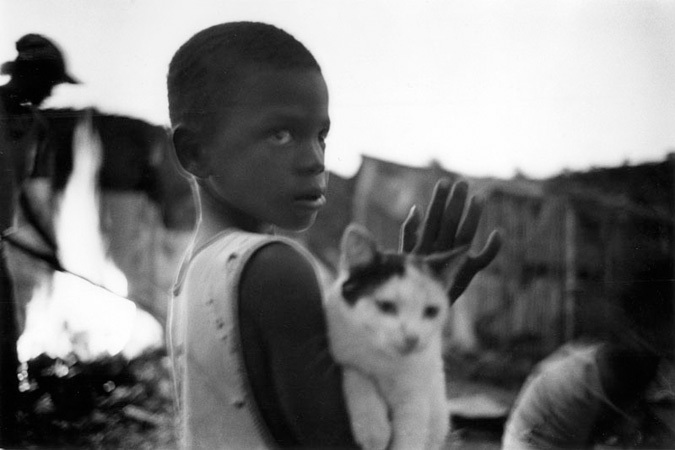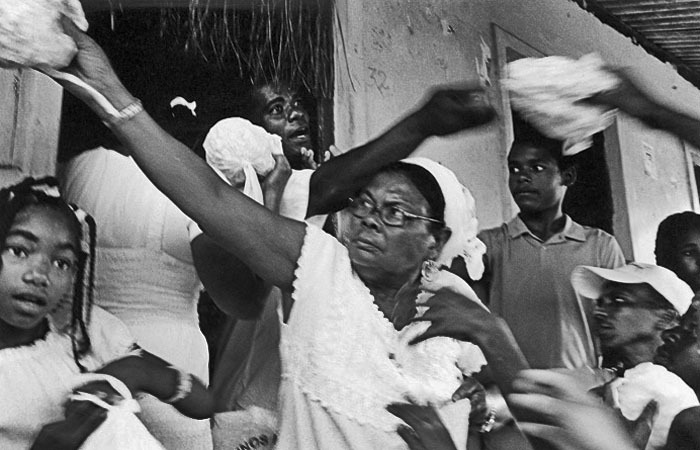Lobster Under The Rain Gallery
Salvador de Bahia, Brazil 2009
® Alessio Cesari
Truly breathtaking! A unique experience in my life. I saw touching places. They have opened up my heart and my eye, and that has allowed me to take some images that can stir up one thousand emotions. I think I only have to thank Ernesto and destiny that brought me here…
Alessio Cesari
®Frank Baudino
To participate in one of Ernesto’s workshops is to be reminded once again of entirely different ways of seeing–and of living. In the fishing villages around Salvador and the island of Itaparica life is quite different from what we are used to. Life for these people embodies an acknowledgment of their closeness to and dependence upon nature. My mind’s eye will always keep the images of young men walking with their birds in cages along the street in the morning for a breath of fresh air, horses being groomed and ridden at sunset, a man repairing a boat using only hand tools, an old man repairing a fishing net in a darkened room with parakeets on the window sill, children flying kites and practicing capoeira. Our group of students, “Lobsters In The Rain” tried to capture these moments of life and, with the help of Ernesto’s editing skills and student input, succeeded in making images that went beyond the merely descriptive. I am pleased with the images I am taking home, however my education in seeing is just beginning. But I am learning, slowly. “Let life happen to you. Life is in the right, always.” Rilke
Frank Baudino
® Gianluigi Nocco
I wanted to participate to Ernesto’s workshop because I feel it’s the best way to improve your picture taking skills. Now, after having attended one, I’m not sure if I have improved some. I think something different has taken place: more than an improvement (no matter how difficult to quantify it) in my initial abilities, I’d rather talk about transformation; yes, I think that this term conveys better the whole stimuli that I received and their positive benefits on how I feel about photography. Ernesto asked of us an attitude of profound analysis on our photographs and more so on what we wanted to convey through our choices. Why feeling content just for the mere description of an image when we can try to be evocative? We need to go beyond the subject to capture the emotions both of the place and of the people living in it. In our childhood we learn to write and to express ourselves in a complete way, but this is not poetry; in order to have poetry you need sensibility, attention, depth thus the message gets to the heart, exactly from where it had all started. In the same fashion with photography you have the possibility to move others and to move yourself; to feel the soul of the person in front of the lens through your sensibility and your desire to overcome what’s in between. To me all that is poetry, and poetry is the form of emotions, in other words the essence of our own life. This is what I have learned from Ernesto. Now, I’m not better than before, but I can say with certainty: something has changed.
Gianluigi Nocco
® Linda Kay Myers
The August 2009 workshop in Brazil was my fifth workshop with Ernesto. Although I have always used the same camera and the same lens, I felt that I was seeing the world differently this time than I had before. I found Brazil to be sunny and colorful, bustling with a zest for life. For ten days, I tried to photograph the people, and capture some small portion of their exuberance and their poetic quiet moments. Brazil was beautiful and I hope to go back someday.
Linda Kay Mayer
® Maurizio Paganelli
When I met Ernesto and started to listen to his first comments to my photographs and to the ones of the other students in the group, I immediately understood the path taken up would have been a difficult one. Although some of my images seemed well composed and quite eloquent of what I wanted to convey, they were invariably eliminated. I still well remember, Ernesto, leaning over the computer in the daily difficult editing sessions, that with a denial movement of his head would say phrases such as:” it’s too descriptive; this subject is too aware; in this image there is too much confusion; the subject is too banal because there is nothing else in the image beyond what you see; the animal portrayed (even of undomesticated animals) is not collaborating; these group of people is perfect but unfortunately this face is not expressive at all, and so on.” I did my outmost on the concept of “awareness” – main cause of the slaughter of many of our photographs. I couldn’t understand how an element virtuous in itself when referred to the photographer taking the picture, fully aware of the act of taking pictures, could become a hindrance when it was referred to the subject (or even the animal) portrayed. Then a sentence by H.C. Bresson came to mind in which he roughly says that a good image depends heavily on the union of the heart, the soul and the mind. In many of my photographs I’d really apply my mind and the results would attest to it. But I was overlooking the heart and even more so the soul, namely the internal eye of which Ernesto often talked about. With difficulty I began to understand that to bear witness to the reality of a moment is not enough: you need to be able to convey also how the photographer feels and that this has to be in synch with the subject and it needs to vibrate with him instead of simply limiting itself to be an aseptic testimony. And the search for this synchrony is an exercise that you need to learn to get fast otherwise you will feel the photographic pains that I mentioned at the beginning that more often than not do not allow you to go beyond the mere description of the event. Thus, also with the very important editing we did of Ernesto’s images, I learned that the subjects/objects in the background are very often very important to help the foreground to come to completion; some drops of water on the floor much more important than any other flashy subject; the trace left by a canoe in the water can be more expressive of whatever “creative” blur; a small monkey caught in a very instinctive movement much more revealing of an attractive first element, that dark face of a man much more emblematic of a perfect studio’s portrait. Once I read a very beautiful sentence on photography that can be defined “ not a reflection of reality but the reality of the refection” (Jean Luc Godard): it’s totally true, because each photo is the reality of how we feel each reflection of the world that surrounds us and speaks much more about us that what we can imagine. Ernesto has helped me to grow, to understand a critical sense totally new and aware (this time in a positive sense) and I’m very grateful to him.
Maurizio Paganelli
® Roberto Hurtado
Ernesto’s workshop was a fantastic photographic experience where we were able to enter worlds that very unlikely in my reality of advertising studio photography would come into contact; places where there was the possibility of taking good photos of human reality. But I think that the best of the workshop is provided by the human being that Ernesto is, by the way of being of him and the people who approach him and become his students and friends. They are people who share their way of seeing the world. I speak of beings with a very good heart and part of the workshop is about developing the look of the heart in photography. As Ernesto says: “when I take a photo, it is because my heart smiles”. And it’s funny to see him when he sees a nice photo of his pupils, because you know he likes him, because he just smiles very honestly. Thank you for this fantastic experience and learning. I keep working to develop the inner look.
Roberto Hurtado
® Willard Plate
This workshop was my fourth with Ernesto in Brazil. There was much that was familiar – visits with the people in the Chocolate Factory and the fishermen in the village near Salvador, great Italian dinners at La Lupa in Salvador, hot and humid weather everywhere. But as will always be the case on one of Ernesto’s workshops, there was also the unfamiliar. Three days and nights on the island of Itaparica, a serendipitous discovery of a Sunday religious celebration in the fishing village, a lobster dinner in the rain, and cheese sandwiches for dinner after miscalculations about restaurant closing times. As usual, it was a wonderful combination of intense photographic work, cultural exploration and good fun.
Willard Pate

